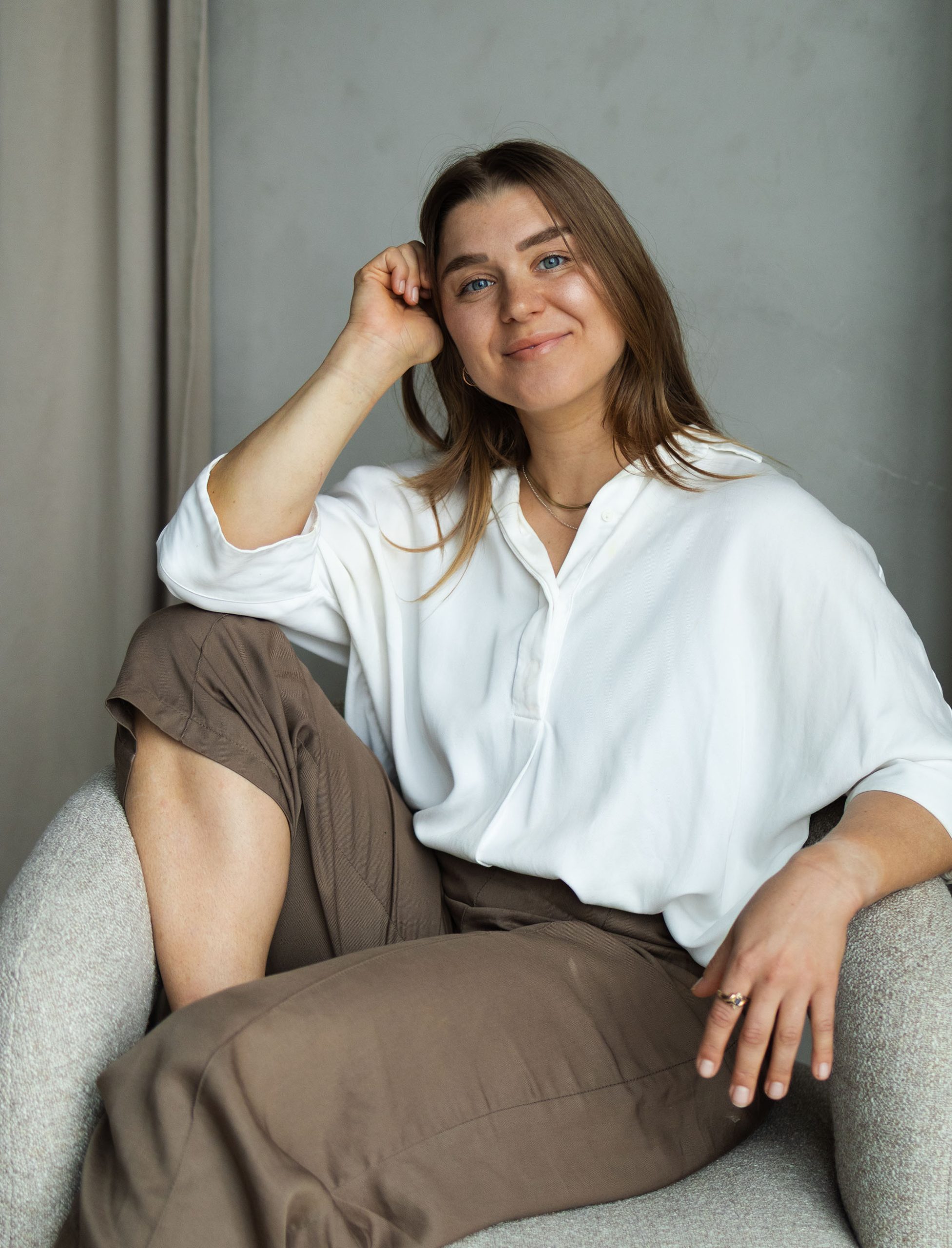Hi there, I’m Katharina Bleinis
(She/Her · MC (in progress) )
I am a Master’s-level Graduate Intern Counsellor offering reduced-cost counselling under the supervision of Clinical Director, Shivani Wells-Shaw. My work is nervous-system informed, somatically attuned, and deeply relational. I honour the wisdom of the body and the complexity of all our parts that make and shape who we are. My approach is grounded in somatic psychology, Internal Family Systems, and Attachment Theory to support clients in gently reconnecting with the parts of themselves that hold their stories.
At the heart of my work is the belief that healing happens in relationship — to ourselves, to others, and to all the parts we carry within us. In session, every part is welcome, so that healing can unfold through understanding and integration rather than resistance or fragmentation. I aim to honour each client’s lived experience and create a space where all aspects of you can be seen, heard, and accepted.

Making space for all of you is the process of honoring your whole self — the ones you’re proud of, the ones you hide, the ones carrying pain or fear — and letting them know they’re welcome here so that healing can unfold from a place of understanding and integration rather than resistance or fragmentation.
My Approach
My therapeutic approach is experiential, body- and nervous system-centered, and informed by parts work. It is deeply relational and attuned to the wisdom of the body. In each session, I bring curiosity to how your body, nervous system, and parts express themselves, recognizing that the body carries old memories and experiences outside of conscious awareness, often showing up as parts. I draw primarily from Sensorimotor Psychotherapy, Internal Family Systems, and Attachment Theory to support clients in gently reconnecting with and being in relationship with fragmented parts of the self, while cultivating inner safety and trust. I am currently completing Level I training in Sensorimotor Psychotherapy.
How I Work With The Body
I believe that healing is not just a cognitive process, but a full-bodied, experiential one. My work with clients goes beyond traditional talk therapy by inviting the body, nervous system, and welcoming inner parts that we hold into the healing process.
By blending somatic modalities like Sensorimotor Psychotherapy with Internal Family Systems, my sessions support clients in tuning into the subtle cues of their body as powerful sources of insight and transformation. Rather than staying at the surface, I gently guide clients toward the roots of their struggles that are often held in early attachment wounds and the body’s implicit memory of past experiences.
In this way, therapy becomes more than a conversation; it becomes a space for embodied healing. All of these processes are grounded in the nervous system’s innate capacity to integrate what was once overwhelming—creating the conditions for deep and lasting change.
My holistic counselling approach is informed by the following training:
Sensorimotor Psychotherapy
Pat Ogden somatic approach explores how trauma is stored in the body’s sensations and movement patterns, using mindful awareness of the body to support healing and nervous system regulation.
Internal Family Systems
Richard Schwartz therapeutic model that understands the psyche as made up of parts, each with their own roles, emotions, and needs. It focuses on creating safety and trust between parts and the inner Self to support healing.
Structural Dissociation Model
a trauma theory that explains how the mind responds to chronic or developmental trauma by creating distinct parts. Some focus on coping and daily tasks, and others storing traumatic memories as a natural and adaptive survival strategy.
Polyvagal Theory
Polyvagal Theory explains how the nervous system is constantly scanning for cues of safety or danger, which influences whether we feel calm, anxious, or shut down. Our nervous system responds to these cues through emotions, behaviours, and in relationship. In therapy, we use this understanding to help you notice these states, honor their purpose, and develop tools to return to balance and connection.
